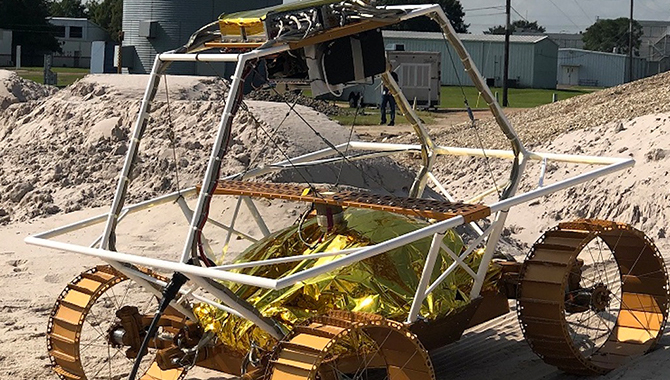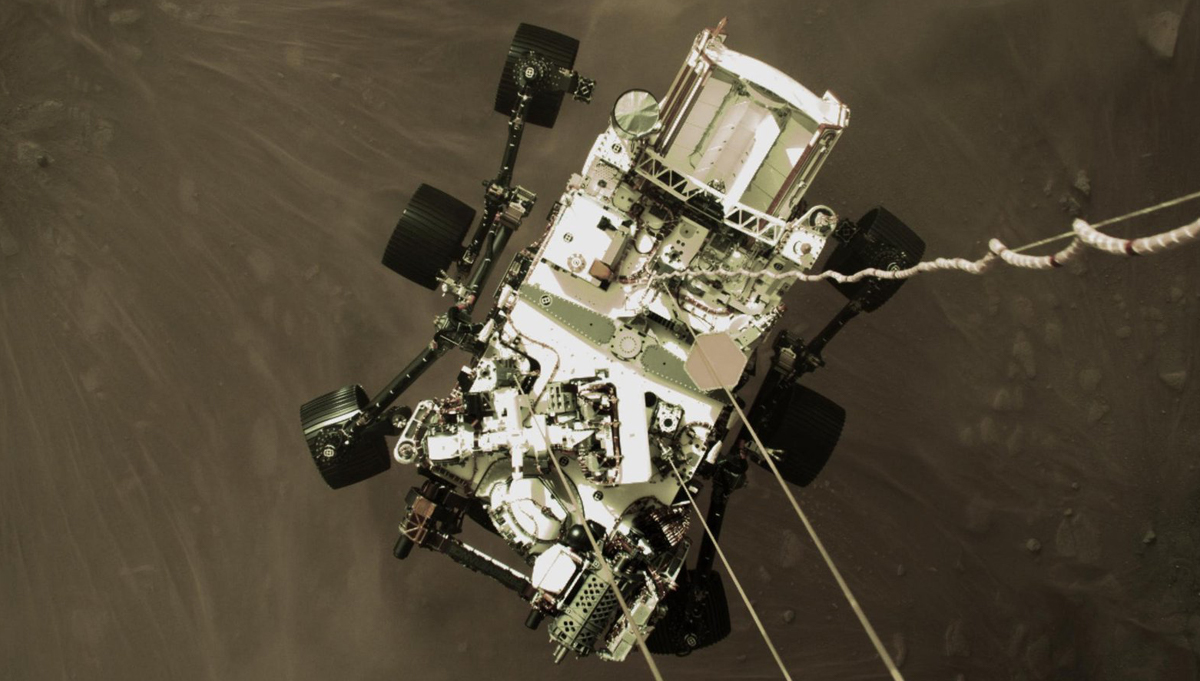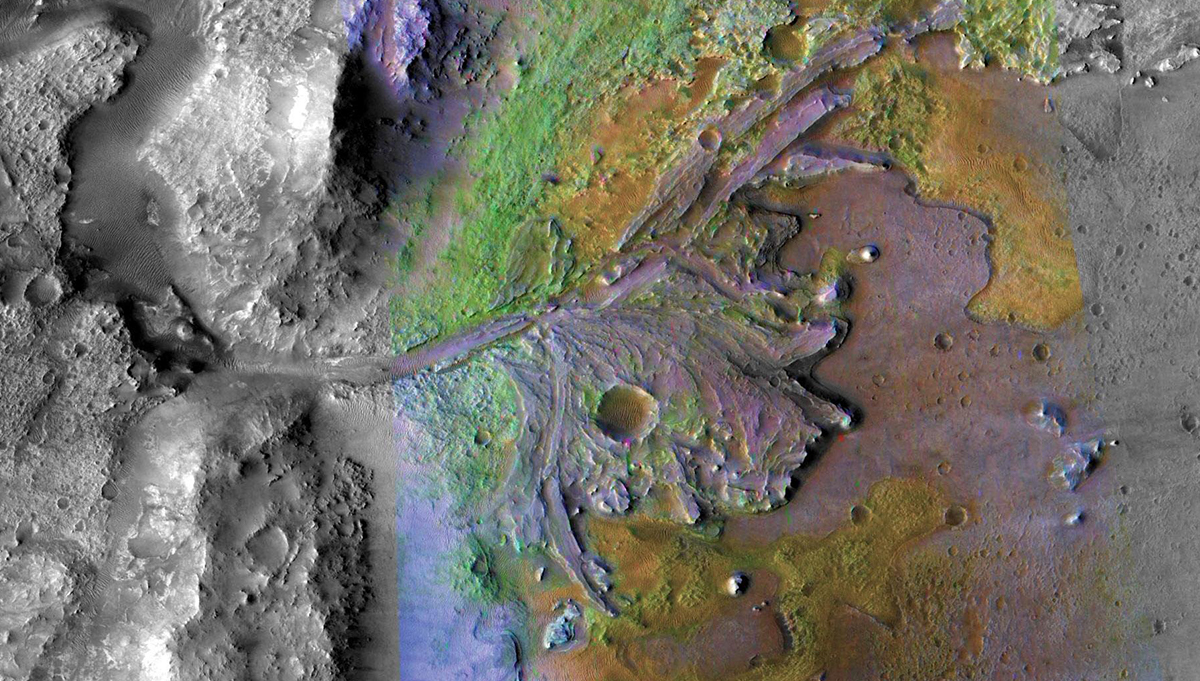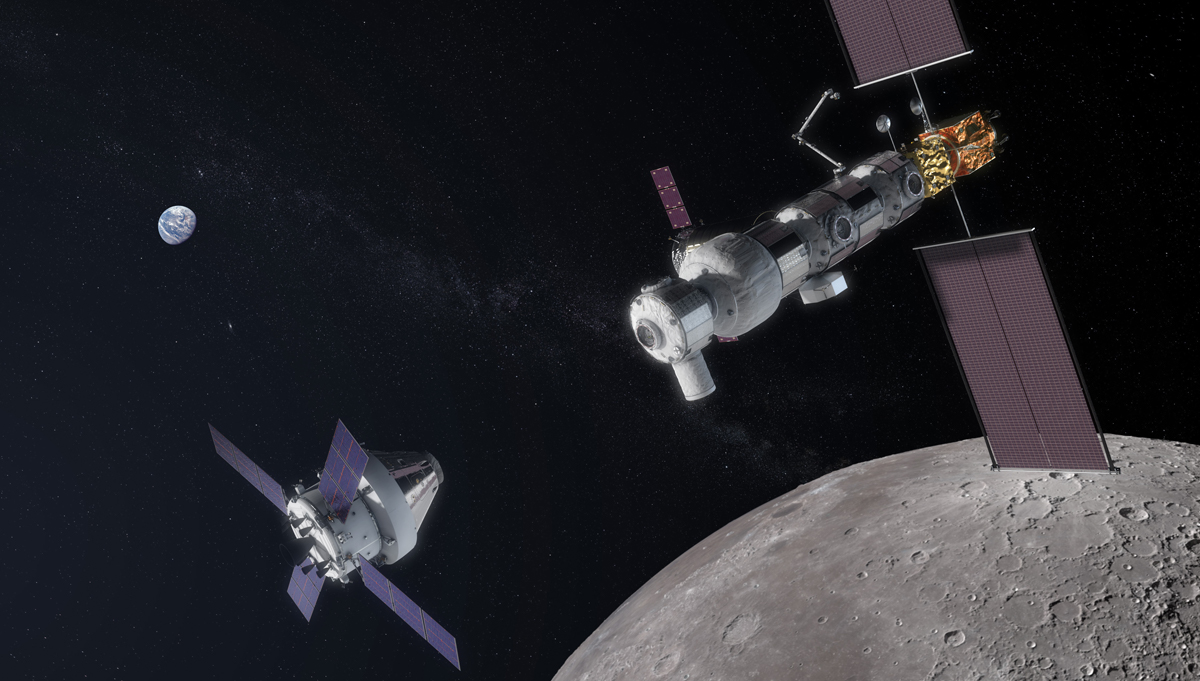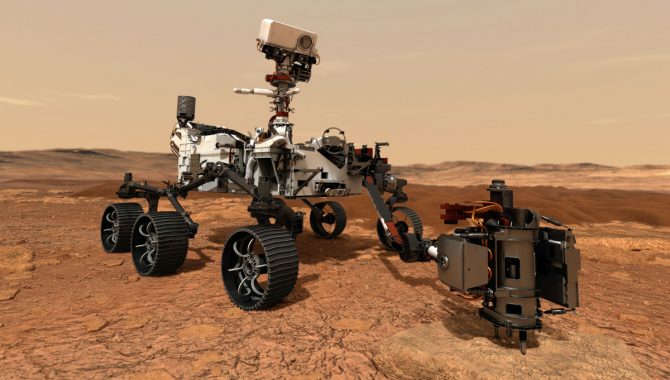
In this illustration, NASA's Mars 2020 rover uses its drill to core a rock sample on Mars. Those samples, stored in hermetically sealed tubes, are the first step of the Mars Sample Return Campaign.
Credit: NASA/JPL-Caltech
Intricate, robotic space mission could hold key to decades of scientific discovery.
NASA and the European Space Agency (ESA) are moving forward in partnership with an ambitious endeavor, known as the Mars Sample Return (MSR) campaign, to bring the first Martian soil and rock samples to Earth. The effort will send multiple, robotic spacecrafts to Mars, each working carefully in concert with the others, to collect tubes containing hermitically sealed soil and core samples from the surface of the planet, place them into a spacecraft, launch them into orbit, and then return them to Earth as early as 2031.
“The Mars Sample Return Campaign … is the manifestation of a lot of dreams and aspirations of the science community,” said Dr. Thomas Zurbuchen, NASA’s Associate Administrator for the Science Mission Directorate, at a NASA press conference in 2020. The returned samples have the potential to answer profound questions about Mars, its history and geology, and the origins and evolution of life in the solar system.
MSR is one of the most complex and technically challenging robotic space missions ever undertaken. The first step in the process begins with NASA’s Perseverance Rover, which is scheduled to arrive at Mars on February 18, 2021. The rover contains a series of drill bits that can be deployed on its mechanical arm to take core samples from a variety of sites around the landing area, Jezero Crater.

This illustration shows Jezero Crater as it may have looked billions of years ago on Mars.
Credit: NASA/JPL-Caltech
Jezero is one of the largest impact craters on Mars, at about 930 miles in diameter. The area is marked by a fan-delta, deposits of clays and carbonates, and other features that suggest the crater contains the remnants of an ancient lake, making it an excellent site to explore for evidence of Mars’ geological past and for indications of whether the planet has ever supported life.
Perseverance will deploy a smaller, second arm to gather and hermetically seal these core samples into several dozen tubes, less than six inches long. Made primarily of titanium, the tubes weigh just 2 ounces, but are engineered to remain hermetically sealed for more than 10 years, with a white coating that deflects sunlight to protect the contents. Each tube has a unique serial number to help catalog its collection site. They can be stored within the rover until it reaches a cache site, where the tubes will be placed on the planet’s surface. Perseverance carries 43 of the tubes and NASA plans to fill at least 20.
The next missions, which could launch as early as 2026, will include a Retrieval Lander containing a Sample Fetch Rover, a Mars Ascent Vehicle, and an Earth Return Orbiter. The Retrieval Lander will land on the surface of Mars with the Sample Fetch Rover, arriving in the Martian spring to avoid the perilous dust storms that can engulf the planet in winter. The rover will travel to the cache site and retrieve the samples, bringing them to the Mars Ascent Vehicle.
“The Sample Fetch Rover is much smaller than Perseverance or ExoMars or any of the current advanced rovers because it has the sole task to scurry across the surface of Mars to get those sample tubes and bring them back,” said David Parker, ESA Director of Human and Robotic Exploration, in the same press conference. “And it’s a race against time. We only have about 8 months on the surface of Mars to do this, to bring the sample tubes collected by Perseverance back to the Mars Ascent Vehicle and get them off the surface of the planet.”
“So, compared to current rovers, it’s got to be a lot faster—maybe up to 10 times faster—it’s got to go autonomously, it’s got to navigate its way there and back, and [it] includes some clever robotics to do the transfer of the sample tubes,” Parker added.
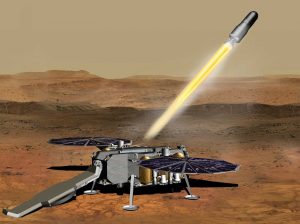
This illustration shows a concept of how the NASA Mars Ascent Vehicle, carrying tubes containing rock and soil samples, could be launched from the surface of Mars.
Credit: NASA/JPL-Caltech
Those sample tubes will be placed into a container within the Mars Ascent Vehicle, which will become the first spacecraft to launch from another planet. Once the ascent vehicle reaches orbit, it will rendezvous with the Earth Return Orbiter and jettison the sample.
“It’s an amazing beast, this spacecraft, the first interplanetary cargo ship, if you like,” Parker said of the Earth Return Orbiter. “And on its cargo deck will be the NASA Sample Containment System and the Earth Entry Vehicle that will actually land back on Earth. So, the key job of the orbiter … is to scoop up the sample container that has been thrown overboard by the Mars Ascent Vehicle—it’s only the size of a … rugby ball if you’re British—and then we have to load it into the containment system and fly it home.”
That sample could land in the Utah desert as early as 2031. The samples can then be analyzed by scientists using the most sophisticated instruments available, instruments too large and complex to take to the surface of Mars in a spacecraft. This would open the door to decades of research, redefining human understanding of Mars the way that the Apollo lunar samples have redefined our understanding of the Moon and the Earth-Moon system. Having the samples on Earth also opens the possibility of independent verification of findings.
“[The Mars Sample Return] is a complex campaign, and it encapsulates the very essence of pioneering space exploration—pushing the boundaries of what’s capable and, in so doing, furthering our understanding of our place in the universe,” Zurbuchen said, in a NASA press release.






